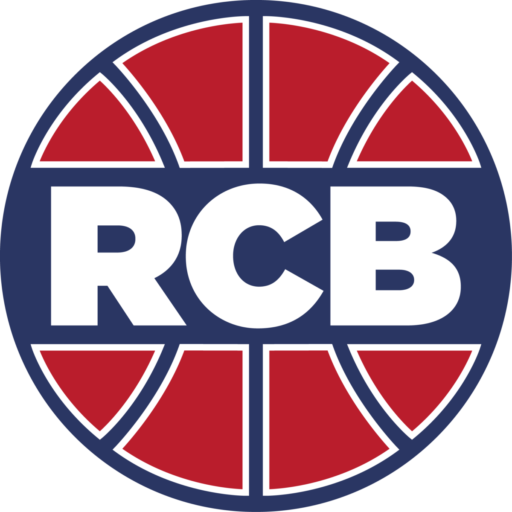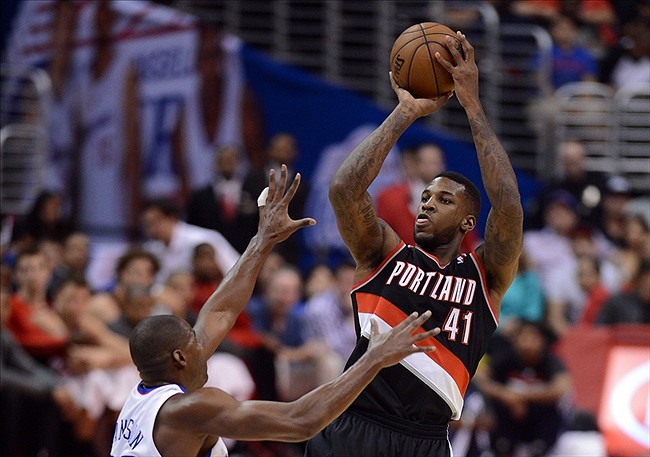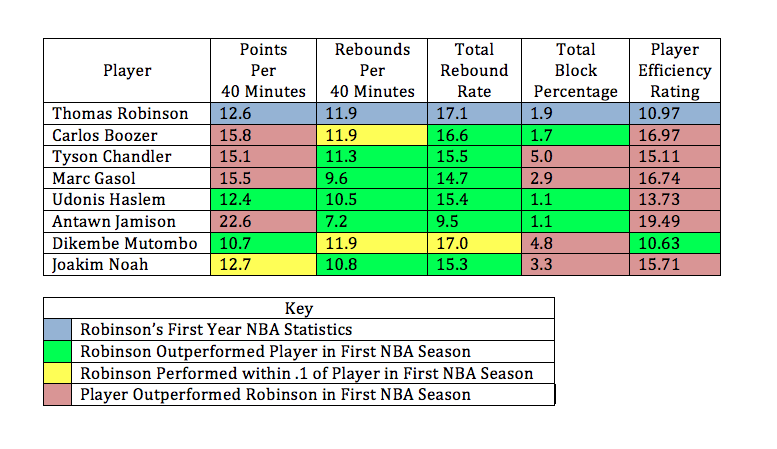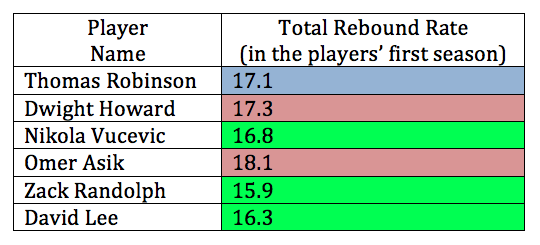Thomas Robinson: More Than Just a First Impression
Six players have attended the University of Kansas, and have gone on to be drafted in the top five of the NBA Draft:
- Wilt Chamberlain* (territorial pick that equated to the third overall pick)
- Wayne Hightower
- Danny Manning
- Raef LaFrentz
- Drew Gooden
- Thomas Robinson
That number could grow to as many as nine by next season, but right now, I’d like to focus on “number six.” Last year Thomas Robinson was selected by the Sacramento Kings with the fifth overall pick. Robinson’s stint in California was short lived, as less than eight months later he was traded to Houston. Unfortunately, Robinson’s journey did not stop there. Robinson was again traded, this time back to the west coast as he joined the Portland Trail Blazers.
Robinson is currently the backup for LaMarcus Aldridge, although the former Longhorn could be on his way out of the organization, after recently expressing his discontent with the Trail Blazers’ organization. There are lots of people who have already written off Robinson, but such a conclusion is simply one that shouldn’t be reached at this point; in fact, most big-men take two-to-three years to develop. The fact of the matter is, Robinson isn’t that far behind the pace set by some of the better big-men in the last twenty years. Below are a few examples of various players (of a few different styles) with a table of how Robinson matches up with each one:
This chart should draw your attention to three different things:
1. Similar Statistics
Thomas Robinson is a very versatile center, in that he can score, rebound, and defend. Whether the comparison is to a strong defender (Chandler, Mutumbo, Noah), to a scorer (Jamison, Boozer), or to someone who does a bit of everything (Haslem, Gasol), Robinson matches up quite well. Thomas Robinson may be overlooked as a potential breakout candidate, but the potential is certainly there. Regardless, Thomas Robinson does have a couple areas to improve.
2. Areas for Improvement
You might notice that there is one main category where Robinson performs at a significantly lower rate than the competition. This is the thing that is keeping Robinson from being a starting-caliber player: Player Efficiency Rating.
What is Player Efficiency Rating?
Player Efficiency Rating is a statistic that I recommend every basketball fan learns and embraces. Player Efficiency Rating, or PER, accounts for nearly every facet of a players being, weighing the positive statistics (made shots, assists, rebounds, blocks, etc.) against the negative ones (missed shots, turnovers, fouls, etc.). The formula then adjusts that number according to how many minutes the player gets per game, and then adjusts it again according to the average pace that his team plays at while he is on the floor. This number is calculated for every player in the league, with the league average always being weighted to equal 15 (to account for the variance in level of talent in the league from decade to decade).
While PER is not a perfect system, there is no denying that it has been an extremely accurate predictor, specifically in the case of big-men. So what can Robinson do to improve his PER? Statistics say that Robinson will improve his PER simply by aging another year and continuing to mature. The transition to the NBA is difficult, and it certainly doesn’t help that Robinson has already changed scenery twice. If Robinson can find a role with the Blazers, and average 15-20 minutes a game (or more), his passing will improve and his turnovers should decrease. This will lead to a significant rise in his PER. Robinson’s below-average rating could be from a function of many different things, but ultimately only consistent minutes will be able to prove whether or not Thomas Robinson could be a legitimate NBA starter.
3. Crashing the Boards
If one thing jumped out at you from the table, it was probably the fact that Robinson is a phenomenal rebounder, due in part to his incredible athleticism. Robinson had a better rebound rate than any other player on the list, and when it came to rebounds per 40 minutes, he was at or above every other player on the list. It is no stretch of the imagination to say that Robinson was simply the best rebounder out of all of these players in the first year of his career. This is a major strength of Robinson’s game, and it shouldn’t be undervalued. Too often rebounding is a statistic that is swept aside, but rebounding big-men are a rarity in the NBA. To give you an example of how significant this statistic is, I have another table for you all to look at:
Now if you were wondering why I chose the players that I did, the reason is quite simple. The five players listed below Thomas Robinson were the five leading rebounders in the NBA last season. Not only does Robinson’s rebound rate rank third among, but it also surpasses the group average of 16.9 and the group median of 16.8. Robinson’s rebounding compares favorably with these five players, which is impressive considering that these are the five BEST rebounders in the league (from last season): These aren’t your ‘run of the mill’ big-men. Robinson has a talent for snatching boards, which can make all the difference in a close game.
Now let’s turn to the future. I’m not saying that Thomas Robinson is going to become the next Dwight Howard, but there are signs that point toward future success for the former Jayhawk standout. Ultimately, it will be up to Robinson to determine how good of an NBA player he becomes. One thing is for sure… Thomas Robinson will always be far above average in one category: heart.








Игра в кальмара 2 сезон 1 серия
Very good blog article. Really Cool.
Selamat datang di situs hackslotgames.com yang juga merupakan situs jasa hack atau cara menang permainan slotgames.
Pasti kalian sudah pernah mendengar setidaknya permainan slotgame.
Lebih kurang seperti permainan dingdong yang hanya
pencet lalu dia putar-putar dan jika beruntung anda
akan dapat JACKPOT.
Pretty nice post. I just stumbled upon your weblog and wished to say that I have truly enjoyed browsing your blog
posts. After all I will be subscribing to your feed
and I hope you write again soon!
Hi, I want to subscribe for this web site to get latest updates, thus
where can i do it please help out.
Viagra
Im grateful for the blog post.Really thank you! Really Cool.
Fantastic article. Will read on…
It’s really very complex in this active life to listen news on Television, therefore I just use internet for that reason, and get
the latest news.
I am genuinely thankful to the owner of this site who has shared this enormous piece
of writing at at this place.
My spouse and I stumbled over here from a different website
and thought I might check things out. I like what I see
so now i am following you. Look forward to looking over your web page for a second time.
Wow, amazing blog layout! How long have you been blogging for?
you make blogging look easy. The overall look of your web site is excellent, as well as the content!
I’ve learn a few excellent stuff here. Certainly value bookmarking for revisiting.
I wonder how much attempt you put to create this type
of wonderful informative web site.
Very soon this site will be famous amid all blogging and site-building users,
due to it’s good posts
https://bit.ly/Vichni-2021-dyvytys-onlayn
https://bit.ly/3k7aaip
Дивитися фільми українською онлайн фільми українською
generic cialis vs cialis
Найкращі фільми 2021 glatzenstein
Нові фільми 2021 року. Главный герой
Фільми та серiали 2020 українською мовою
в HD якості Хэллоуин убивает
Дивитися фільми українською онлайн Небо 2021
Новинки фільми, серіали, мультфільми 2021 року, які вже вийшли Ви можете дивитися українською
на нашому сайті Последняя дуэль
Не пропустіть кращі новинки
кіно українською 2021 року Ледяной демон смотреть онлайн
40443 505669 https://clck.ru/XEMJK
Buy Levitra Line
I think this is a real great blog. Keep writing.
Hey there! Would you mind if I share your blog with my facebook group?
There’s a lot of folks that I think would really appreciate your content.
Please let me know. Thank you
I just like the valuable information you provide
for your articles. I will bookmark your blog and test again right here frequently.
I am quite certain I’ll be told many new stuff right right here!
Good luck for the next!
I loved your blog.Thanks Again. Great.